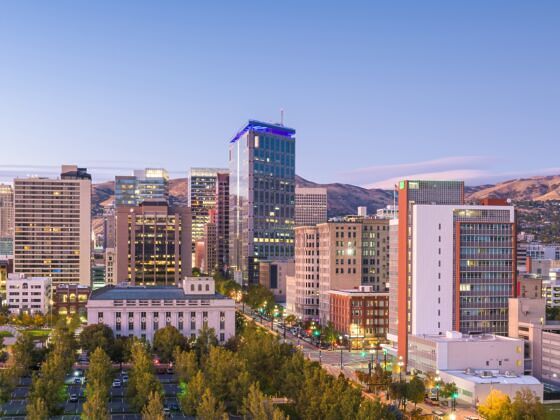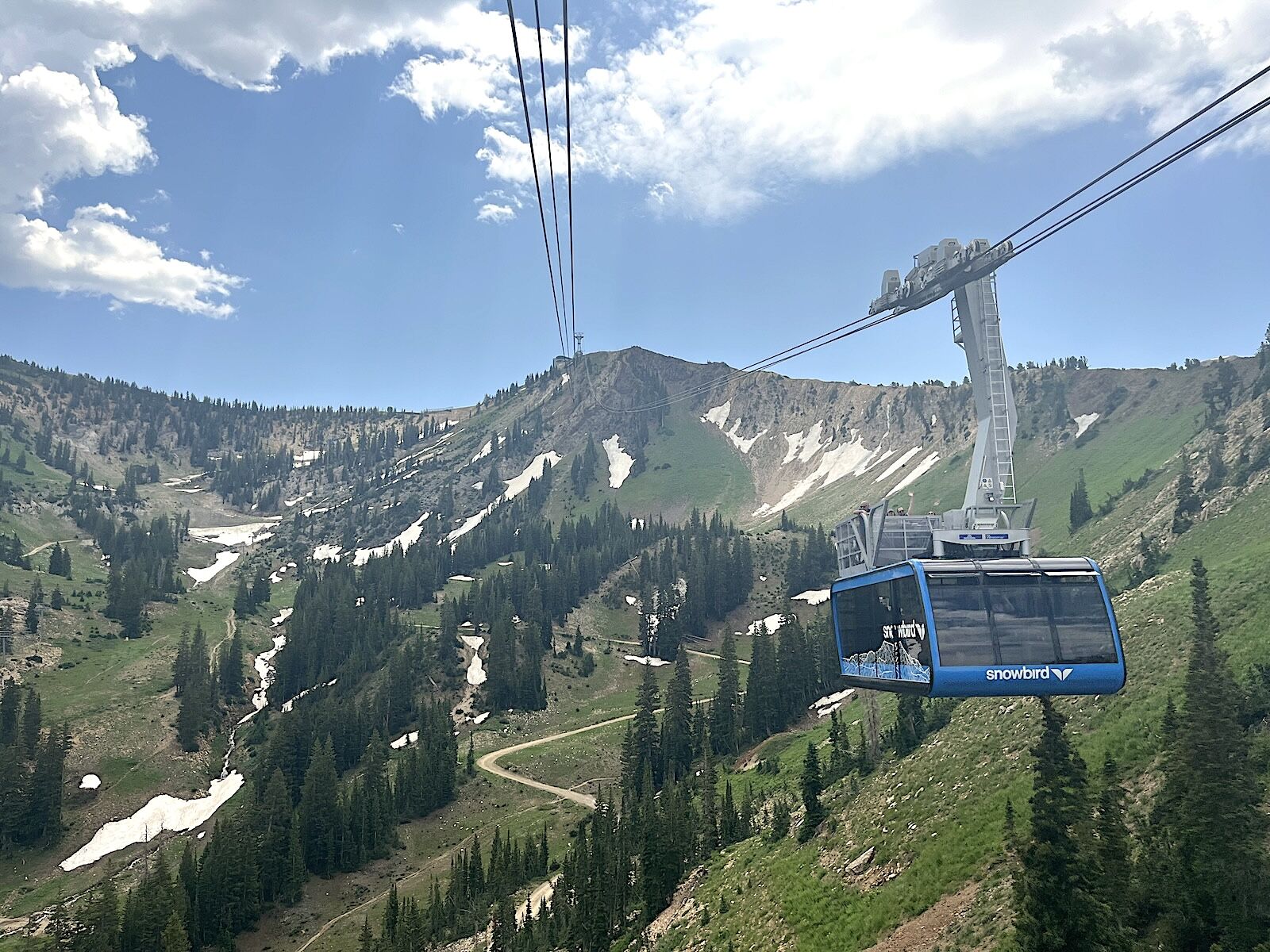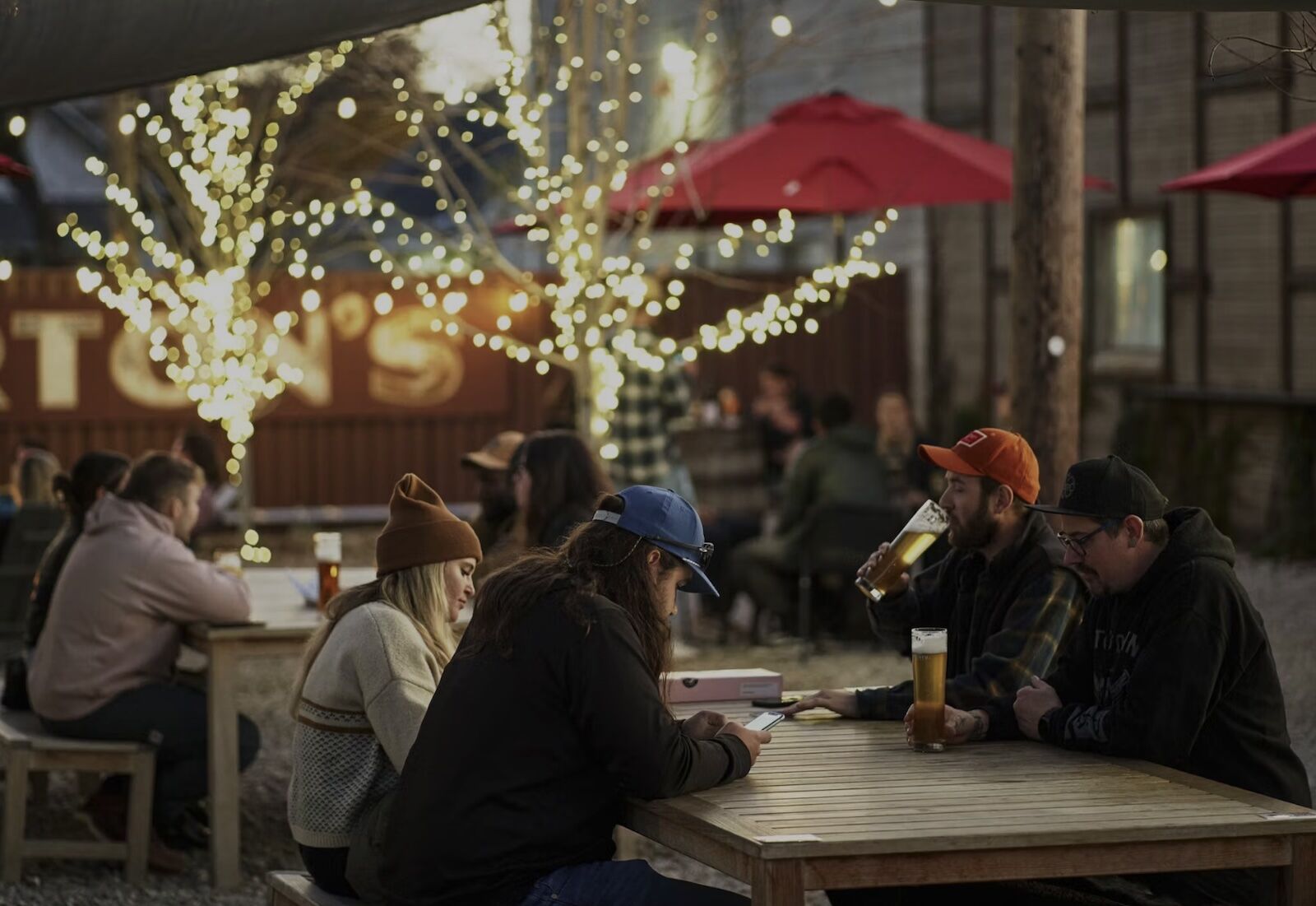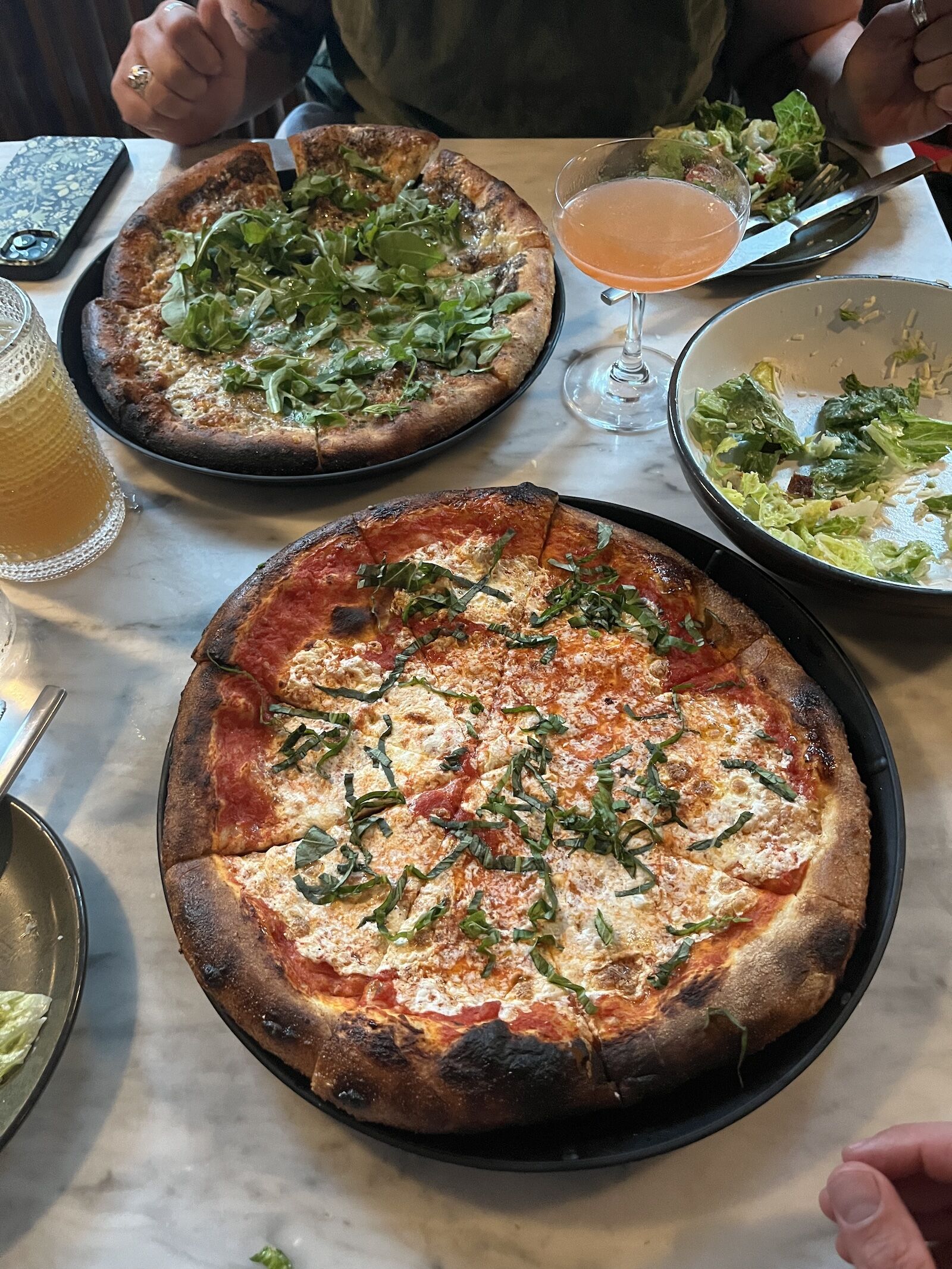My buddy and I almost turned back upon reading the “Club Members Only” note plastered to the doorman’s booth. It wasn’t apparent why what appeared from the outside to be a standard-issue bar and grill was, in fact, a hoity-toity private club. The year of our confusion was 2007, the establishment was a joint with a simple sign that read, “Pub, Grill, and Night Club.” But a couple of ski bum college kids visiting Salt Lake City on a spring break powder getaway weren’t up to snuff in any case, we presumed.


The Olympics Will Return to Salt Lake City in 2034. The City Is Already Better to Visit Than Ever.
Anyone familiar with Salt Lake City’s formerly arcane liquor licensing policies knows already that our assumption was false. To gain entry to the nightclub, one of us needed only to pay that $5 “membership fee” to the doorman and the other could join as his “guest.” Utah’s “private club” policy came to an end in 2009, but for 40-odd years before that, establishments serving liquor had to operate as membership clubs and those entering their doors had to fill out an application and pay a fee. During this era, even the common beer-and-a-shot order was met with a “no-can-do,” as only one drink could lounge in front of a patron at any given time. Beginning in 1990 and lasting until before the 2002 Olympics, there were even metering devices installed on bottles of liquor.
Over the course of a week in the Beehive State snowboarding during the day and taking in the capital city’s pub scene by night, we became accustomed to the policy, and began alternating who paid the fee and who was the honored guest. In the end, aside from parting us from a few Lincolns, the strict liquor laws weren’t that big of a deal – Colorado, where we lived, had only recently begun allowing liquor stores to operate on Sundays. But their mere existence made it obvious why the perceptions of Salt Lake City as a hub under the fat thumb of the Mormon church persisted as widely as they did. Prior to the 2002 Winter Olympics, our drinking experience would have been considered radically liberal in the city.
Things have consistently, if slowly, changed since the private club law was abandoned in 2009. I’ve visited the city several times since that first experience in 2007, uncovering each time a layer of what is a contemporary, even vibrant, metropolitan area. With the announcement that the city will again host the Olympics in 2034, it’s worth discussing why now is a great time to visit Salt Lake City. As a semi-frequent visitor (I’ve been to Salt Lake seven times since the first visit), it’s stood out to me how the ease of getting a beer has evolved in tandem with the city’s standing as a hub for those who want an active mountain lifestyle combined with urban amenities.
No major city offers easier mountain access

Look closely and you can see the people on the roof. Photo: Tim Wenger
Many snowboarders, mountain bikers, and other outdoor enthusiasts I know have moved to the area in the past decade, and none seem to have any plans to pull the plug. Growing up in Denver, the mountains of the Front Range were right there. I gazed at them every day on my way to school. Getting to them on a weekend, though, required slogging through stop-and-go traffic on Interstate 70 that frequently moved so slowly it would take two to three hours to reach the ski resorts of Summit County 70 miles away. While there are fewer resort options, Salt Lake City enjoys easier access to its nearby ski resorts than Denver.
My wife and I visited Salt Lake City this summer and spent a day hiking at Snowbird. We felt no rush getting up there in the morning – we left the hotel in downtown SLC around 9 AM and were in Snowbird’s parking lot by 9:40. Granted, it was on a weekday in summer, and I’ve experienced moderate ski traffic heading to Snowbird in the winter, but even doubling the 35-minute drive is preferable compared to what I grew accustomed to when I lived in Denver. En route to the mountain we discussed how much easier it must be for the resort employees who work in both Little and Big Cottonwood Canyons, where most of the city’s nearby ski resorts are, to be able to find housing in greater Salt Lake as opposed to fighting for housing in small and increasingly unaffordable resort towns, a major issue facing ski resort employees across the country.
It’s not just the ski resort staff that benefit. Outdoor recreationists of all stripes – from hikers to climbers to bikers in summer and all manners of snowsports in winter – to reach their sport of choice. he same is true for recreationists – most of us can’t afford to buy a house in Park City or Aspen, even if we wanted to. Here you can get from the airport to the slopes in 45 minutes or so, a monumental achievement given that Salt Lake City International Airport is the 21st busiest airport in North America, flying nearly 23 million passengers in 2023.
Its resorts are benefitting from the influx. To reach the top of Snowbird from the base village, we rode atop the tram in a newly-designed carriage called the Rooftop Balcony that provides 360-degree views of the surrounding Wasatch Range while you move higher into it. We literally stood on top of the tram as it moved – and the experience was like riding a chairlift where you can stand, turn around, move about side to side, and actually get a good look at what’s around you instead of only what’s immediately ahead. The resort already pushed innovation with its magic carpet skier tunnel through the mountain, and now its tram offers a similar thrill for summer visitors.
The beer scene is on-point

Photo courtesy TF Brewing
After hiking at Snowbird, we stopped at Templin Family Brewing, known by seemingly everyone we spoke to as TF Brewing. I knew of Kevin Templin, the brewery’s founder, as he formerly brewed at Red Rock Brewing, which I’d visited on a previous trip. TF opened in 2018, and is part of a generation of breweries in Salt Lake City that have established the region as a great place to raise a pint. There are nearly three dozen breweries in the Salt Lake metro area, more than twice as many as there were a decade ago according to a map compiled by Utah Beer Blog. I’m basic when it comes to beer – I like pilsners, ales, and lagers. Maybe a dunkel or a red here and there. Here I started with a Jarda Czech Pilsner and followed it with a Granary Kellerbier, both of which were light and refreshing on that hot summer day. Alisha, who’s more adventurous, had a Big Smoke, a Franconian smoke beer, and a Phantasm with Incognito Citra Hops.

Pizza at Emigration Canyon Brewing. Photo: Tim Wenger
The brewery, located in the Ballpark neighborhood, was buzzing around happy hour time. This itself is not so extraordinary – but as a visitor, I’ve come to see Salt Lake’s beer scene as representative of the city as it is. It’s gotten better each time I’ve visited. Back in the day, there was Squatter’s Pub, Red Rock Brewery, and Uinta – beyond those three, just a few small-scale operations could be found around the city. It’s not just beer bars on offer. For dinner we visited Emigration Brewing, a creekside taphouse about 15 minutes outside the city in Emigration Canyon. Here I had an Amber Ale and a mezcal cocktail called Commandment, which added Fernet Branca, pineapple, cinnamon syrup, and ginger beer to the spirit complemented by lime and mint, paired with ceviche and pizza.
A good city is multi-faceted, defined not by its institutions but by its people – and as a beer drinker, I’ve noticed the changes in the city’s offerings over the years. Visit Salt Lake currenlty offers a 1-day Salt Lake Brewery Pass via its app, which allows discounts at brewery’s across the city. Also on offer is a 1-Day Connect Pass, which grants admission or discounts at cultural attractions across the city including the Clark Planetarium, The Children’s Museum of Utah, and the Natural History Museum of Utah. It’s easier than ever to have a well-rounded trip to Salt Lake, and it stands to be exciting how the city will evolve before it welcomes back the world in 2034.